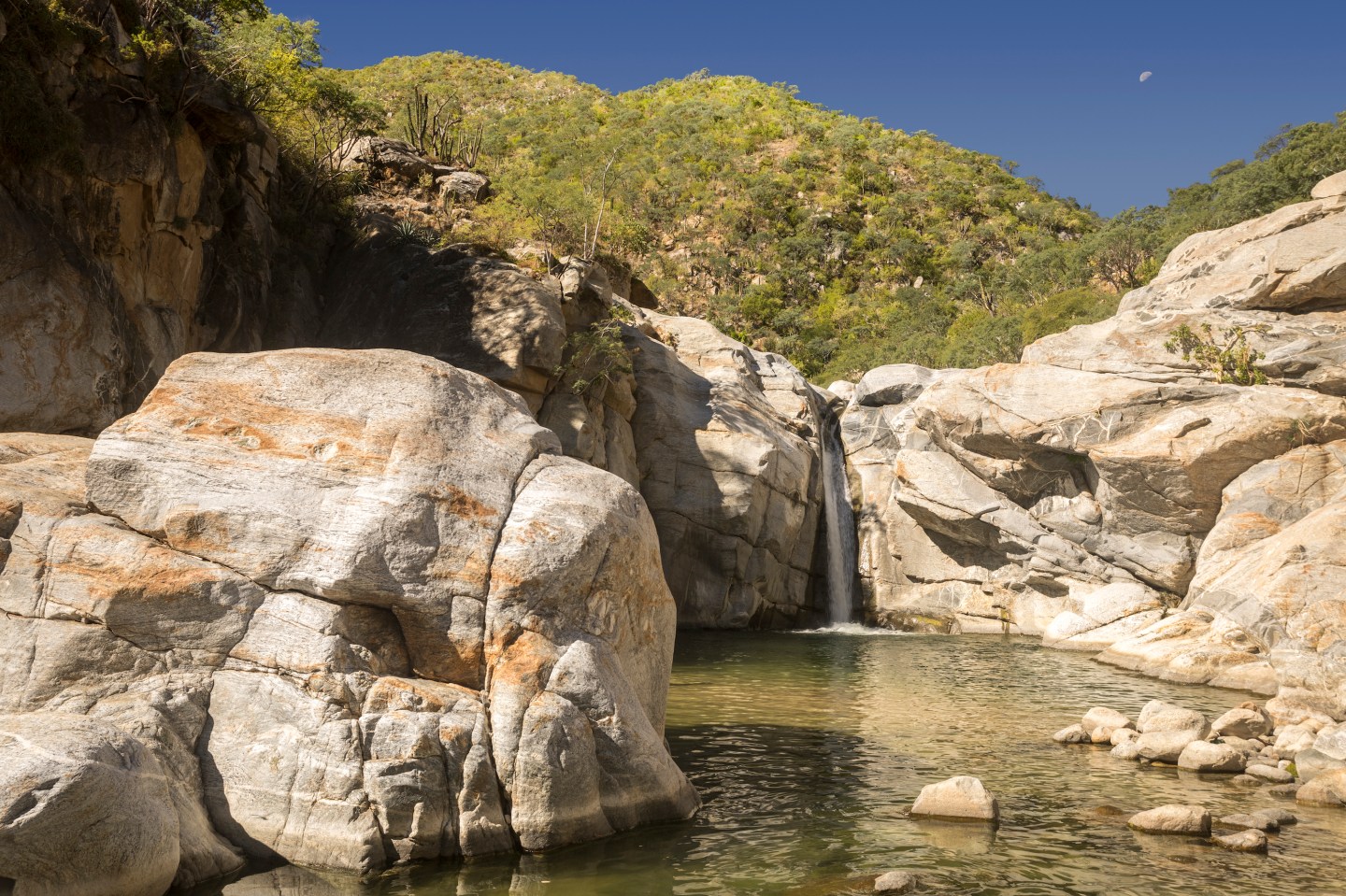Cabo’s Newest Luxury Resort From Ritz-Carlton Favors Tranquility Over Nightlife

Los Cabos in Mexico—a sun-kissed, beachy region encompassing Cabo San Lucas and San Jose del Cabo—has long built a reputation around a thriving nightlife: American vacationers seeking a beach destination for a quick spell, especially nearby Los Angelenos, dancing on hotel rooftops and snapping selfies to the latest rhythmic club anthem.
But the Ritz-Carlton Reserve’s newest resort, Zadún, which opened in November in San Jose del Cabo, wants its guests to party less and find tranquility and rest instead.
Set on a natural slope with panoramic views of the Sea of Cortez, Zadún is surrounded by three golf courses designed by Greg Norman and Jack Nicklaus. The resort offers 115 guest rooms, suites, and 42 two-story villas—all of which include their own private plunge pool, as well as indoor and outdoor showers.
Prices for an 807-square-foot one-bedroom start at $664 per night—each with their own plunge pool as well as indoor and outdoor showers—and top off at nearly $2,300 an evening for the Grand Reserve Villa: a vast 6,000-square-foot oceanfront abode with two bedrooms, two full bathrooms, two half-bathrooms, five lounges, a pool, a hot tub, private kitchen, and personal gym.

“We always want to take the design deeper, so that it is elegant and inviting, but also authentic to the area,” explains Lisa Holladay, global brand leader for the Ritz-Carlton. “Guests who visit the hotel will see the work of artisans from across Mexico, handwoven textiles and art that bring Mexico’s culture to life. The goal is always to offer our guests an experience that will be both exceptional and inspirational, and one that will leave an indelible mark.”
The guest rooms serve up a contemporary take on Mexican design that showcases the talent of handcrafters from regions throughout Mexico, including Campeche, Jalisco, Mexico City, Oaxaca, Yucatán, and Puebla. Conceived by interior design firm Uribe Krayer, each room sports a careful curation and combination of various types of wood and stone. For the furnishings, communities of weavers created handwoven textiles for the pillows, while a unique framed textile serves as one of the primary works of art in every room.

Zadún’s spa was created to help hotel guests achieve a “positive transformation,” according to Ritz-Carlton. To that end, signature treatments include hand-blended body scrubs made with tamarind, salt, and other local ingredients. The “templo caliente” ritual begins with a traditional energy cleansing ceremony followed by a hot botanical scrub and cool outdoor shower. The spa’s Savasana Sound Room is used for all of the treatments, using sound therapy to create a state of deep meditation.
Zadún offers four restaurants and an agave bar, where guests can enjoy artisan dishes and drinks highlighting local flavors and textures from Puerto Los Cabos and other regions throughout Latin America. Humo, for instance, is a rustic, refined, dinner-only grill with a global selection of wines; El Barrio highlights authentic street food by day and innovative Mexican cuisine at night. (The resort will also host hands-on culinary festivals, where guests pick ingredients and learn to cook traditional Mexican dishes.) Meanwhile, guests can also enjoy carefully crafted cocktails at Equis or the agave bar Candil.

Holladay points to the Ritz-Carlton Reserve’s “Tosoanis” as a resort highlight. This team of personal attendants, or veritable butlers, are experts in different areas, such as art or culinary, and they work with guests to create a stay that’s more personalized to each guest’s interests.
“They [Tosoanis] can be described as dream watchers or dream keepers, which is fitting, because their level of care is tangible and is a big part of what places Zadún in a league of its own,” Holladay says.

Zadún is the fourth Ritz-Carlton Reserve location—a brand extension of the original Ritz-Carlton properties focused on offering guests hospitality experiences in remote locations around the world where guests can experience a deeper immersion into the culture of the destination they are visiting. Existing Reserve locations include Phulay Bay in Thailand; Ubud, Indonesia; Krabi, Thailand; and Dorado, Puerto Rico.
To that end, the hotel group’s Ambassadors of the Environment Program worked with Jean-Michel Cousteau’s Ocean Futures Society to build out educational programming that highlights regional wonders, such as whale sharks and manta rays, while also teaching visitors about preserving our environment.
“We want the Reserve experience to be truly special, even transformational,” Holladay says. “With the blending of the desert and the sea, and the culture of the area, everything felt right when we set out to create this Reserve.”
More must-read stories from Fortune:
—This Vegas casino just completed Sin City’s most expensive renovation ever
—Escape the Game of Thrones crowds and enjoy a luxury Croatian vacation in Dubrovnik
—Your modern weekend away meets the Old West in this sleepy California town
—Mexico’s most enticing getaway: San Miguel de Allende
—This hotel is made up entirely of tiny houses
Follow Fortune on Flipboard to stay up-to-date on the latest news and analysis.